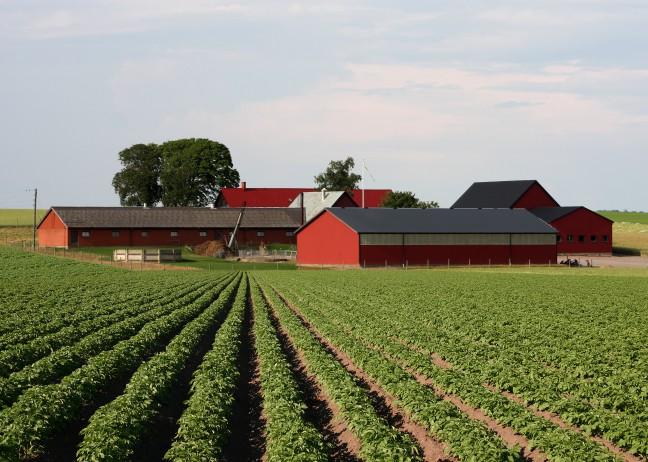A report conducted by the Forward Analytics branch of the Wisconsin Counties Association found two-thirds of the state’s rural counties saw a decline in population between 2010 and 2018, according to the Wisconsin State Journal.
The report comes amid a period of notable economic decline in rural Wisconsin. In 2019, Wisconsin lost roughly 10% of its dairy farms, according to UPI news. The state’s unemployment rate also rose consistently over the last six months of 2019, from 3% in July to 3.4% in December, according to the U.S. Bureau of Labor Statistics. This poses a threat to the 435,700 jobs rural Wisconsin provides, accounting for 11.8% of the state’s employment opportunities, according to the Wisconsin Department of Agriculture, Trade and Consumer Protection.
It’s a trend which David Egan-Robertson, an applied demographer at the University of Wisconsin’s Applied Population Laboratory, can be traced back to the Great Recession between 2007 and 2009.
The Forward Analytics report started in 2010, but the issue really started with the Great Recession, Egan-Robertson said.
“All the job growth in the country is basically happening in urban counties,” Egan-Roberston said. “Rural counties haven’t been able to come back to even what their employment levels were during 2007.”
Evers announces plan to aid struggling dairy farmers during State of the State Address
Egan-Robertson pointed to a shift in the demography of rural counties in Wisconsin, noting the death rate has not only exceeded the birth rate in non-urban areas, but the number of children age 0-17 in these areas declined by 14% between 2000 and 2018.
The age gap between rural and urban counties is likely tied to the unequal distribution of employment opportunities between the two regions of the state, according to UW professor Steven Deller.
“If there are less economic opportunities in an area, a lot of times younger people will head to an urban center to find work,” Deller said. “People are less inclined to stay in counties that haven’t seen significant growth in opportunities, and that’s what we’re seeing now.”
Economic hardships lead to skyrocketing suicide rates among Wisconsin farmers
As economic activity dwindles, forcing more residents to migrate from rural to urban counties, and consequently aging their populations, the everyday lives and functional capabilities of rural areas are significantly altered, often for the worse.
Egan-Robertson said the slow economic recovery of rural communities leads to a lack of opportunity, which causes an exodus toward metropolitan areas. This migration creates a shorthanded workforce, which prevents businesses from investing in less densely populated counties. The result is a cycle of economic stagnation that damages local institutions.
“It almost feeds on itself,” Egan-Robertson said. “If a population is moving away, there aren’t people to create jobs, so if someone was thinking of opening a new plant, they might look at a local area and decide there aren’t enough working age people here.”
There is a decline in school enrollment as well, so the districts are reducing the number of schools, Egan-Robertson said.
A decline in population and a slow economic recovery is not unique to Wisconsin. A United States Department of Agriculture study found the number of Americans living in rural areas declined by 2% nationally between 2010 and 2018. This same study discovered that while metropolitan counties have seen an average annual job growth of 1.5% since the Great Recession, non-metropolitan counties have grown at a rate of 0.04% annually.
In Wisconsin, the number of unemployed individuals in rural counties grew by almost 5,000 between 2012 and 2017, according to the USDA study. The population of rural counties over the same time period fell by over 4,300.
The decline in rural population, coupled with its causes and ramifications drew attention from Gov. Tony Evers, who discussed the drop in rural economic activity during the State of the State Address, pledging a three-pronged approach to combat the ongoing economic difficulties challenging non-metropolitan areas. Evers’ efforts appeared directed towards specifically revitalizing farm productivity, which potentially ignores another source of rural economic activity in Wisconsin.
Evers announces plan to aid struggling dairy farmers during State of the State Address
Though Wisconsin’s rural counties experience many of the same difficulties facing the rest of the country, the state’s non-metropolitan counties have a unique facet to their economy which could serve as a potential source of renewed business activity. Egan-Robertson said rural counties in Wisconsin have a notable manufacturing presence, which historically served as a source of steady employment.
“Particularly in Wisconsin a lot of rural counties have small-scale manufacturing,” Egan-Robertson said. “When you think of rural counties, what predominates is agriculture. So Wisconsin’s a little unusual in that we have much greater emphasis in our rural counties on small manufacturers.”
The Forward Analytics report provides insight into an eight-year period between 2010 and 2018. The decline in rural population seen during this time frame gives an early indication of what the upcoming 2020 census will unearth related to shifts in population. With an overall decrease in the rural population evident, it’s possible the state legislature will need to redraw districts to adjust for demographic changes.


















